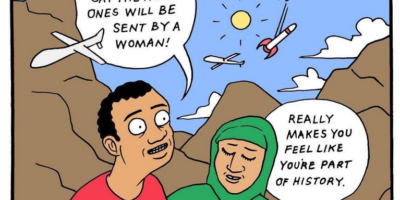By Mary Ashley Burton
It would be difficult to argue that women receive equal representation to men within the film industry. According to the Center for the Study of Women in Television and Film, women comprised only 16% of all directors, executive producers, producers, writers, cinematographers, and editors working in the top 250 domestic grossing films of 2009. This marked a 3% decline from 2001. Women accounted for only 7% of film directors in 2009, which was a 2% decline from 2008.
Yet the Center for the Study of Women in Film concludes that a substantially higher percentage of women (24%) work on feature-length films screened at festivals, indicating that festivals are generally a better opportunity for exposure to films in which women have had major roles.
LUNAFEST takes that exposure a major step further. Not only do the festival’s organizers base their selection on films “by, for, and about women,” the festival travels around the country from October to June, partnering with various charities. Its aim, according to their website, is “to simultaneously promote women filmmakers, raise awareness for women’s issues, and support worthy women’s nonprofit organizations throughout the U.S. and Canada.” Since its inception in 2000, Lunafest has raised $570,000 for women’s organizations, as well as providing a means for women filmmakers to gain a larger audience, and for women within individual communities to connect with one another.
On November 9th at the Kentucky Theatre, Lexingtonians were given a chance to enjoy an evening of women-centered films, support the Bluegrass Domestic Violence Program and the Breast Cancer Fund, and participate in a discussion of both the individual films shown and the female presence in Hollywood (or lack thereof) led by activist LeTonia Jones.
The debate provoked interesting questions for female filmmakers and audience members alike. Are there particular qualities that dominate films made by women? Are there qualities that are strikingly absent? Is there a greater need to highlight traditional roles, such as motherhood, or should there be a more marked effort to give female characters more dimension in their cinematic representation?
For some participants, this particular selection of films was a testament to the strengths of women filmmakers and their unique attention to emotions, connections and support. The shorts produced a somewhat different viewing experience than most mainstream Hollywood fare which, as several viewers remarked, tends to include more violence and sexually objectified representations of women. Although the films easily could have centered on the woman as victim, they instead focused on the virtues of their subjects. There was dedication in the young table tennis player who practices up to four hours a day. There was bravery in the AIDS victim facing both her own mortality and that of the lover she has infected. There was courage in the the midwife helping expectant mothers through the birthing process.
While agreeing that there was noticeably more focus on emotional connection and positive values, some audience members didn’t think the films went far enough in their representation of voices rarely heard in mainstream films, particularly minorities. There was no direct representation of the lesbian experience, for example, or even a depiction of singlehood as a rewarding lifestyle choice for women. Those observations, however, raised more questions. Is it reasonable to expect that every film made by or for women attempt to include every experience or give voice to every community that is routinely excluded? At what point will women viewers be able to experience a story simply for what it is, without focusing on what it lacks?
For the female filmmaker, the dominant struggle does not seem to be over choosing which group’s experience to portray on screen, but sheer survival in an industry dominated by males. For this reason, local filmmaker Patti Parsons found LUNAFEST to be most useful: “Filmmaking is a really male-dominated industry. You look at the directors, usually most of the people working on the set, and you look at the actors – there even tend to be more roles for male actors. So this film festival is a good vehicle to get more women involved.”
Local female filmmakers will have an even greater chance to get involved in next year’s festival with the addition of a local film contest. According to an announcement at the festival, one film made by a local filmmaker will be selected to be shown in addition to the LUNAFEST films. While little information is currently available on the Bluegrass Domestic Violence Association’s site, http://www.beyondtheviolence.org, details on the contest will be forthcoming and the deadline is expected to be June 2011.



Leave a Reply